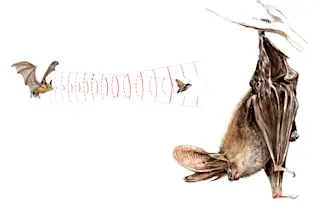Bats and dolphins are seemingly polar-opposite creatures, but they do share a special skill: echolocation. This ability — mapping out the area via the reflection of high-pitched sonic signals you send out — comes in handy when you’re navigating the night skies or the murky depths of the ocean. Researchers already knew this ability came about through convergent evolution, when two or more unrelated species develop the same trait independently. But a recent paper published in Science Advances announced that researchers have identified genetic characteristics that could have helped bats and dolphins develop this super power.
An international group of scientists combed through the genomes of both creatures, looking at them side-by-side to spot any similarities. Specifically, they were looking for amino acids, the building blocks of life, that showed up in the same spot on the genome in both bats and dolphins.
Of course, they found some similarities published ...














